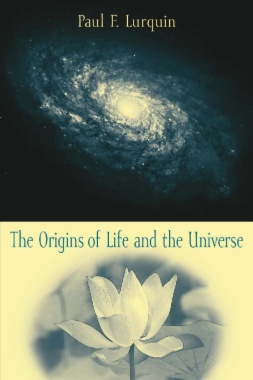The Origins of Life and the Universe is the culmination of a university science professor's search for understanding and is based on his experiences teaching the fundamental issues of physics, chemistry, and biology in the classroom. What is life? Where did it come from? How can understanding the origins of life on Earth help us understand the origins of the universe, and vice versa? These are questions that have occupied us all. This is a book, then, about the beginning of things—of the universe, matter, stars, and planetary systems, and finally, of life itself—topics of profound interest that are rarely considered together.
After surveying prescientific accounts of the origins of life, the book examines the concepts of modern physics and cosmology, in particular the two pillars of modern physics, relativity and quantum theory, and how they can be applied to the Big Bang model of the creation of the universe. The author then considers molecular genetics and DNA, the famed building block of life. In addition to assessing various hypotheses concerning the appearance of the first bacterial cells and their evolution into more complex eukaryotic cells, this section explains how "protocells" may have started a kind of integrated metabolism and how horizontal gene transfer may have speeded up evolution. Finally, the book discusses the possibility that life did not originate on planet Earth but first appeared on other solar planets, or perhaps in other star systems. How would such a possibility affect our understanding of the meaning of life, or of its ultimate fate in the universe? The book ends as it begins, with profound questions and penetrating answers, a state-of-the-art guide to unlocking the scientific mysteries of life and matter.
- Contents
- Preface
- Introduction
- The Meaning of Science
- What Is Life?
- Some Origins Models Before Science
- 1 Foundations of the Universe
- What Is in the Universe?
- Physics Holds One of the Clues to the Origins: Relativity
- The Next Clue: Quantum Physics
- Forces of Nature and Elementary Particles
- Conclusions
- 2 Building a Universe
- Cosmology: The Big Bang Model
- The Genesis of Stars and Planets
- Conclusions
- 3 Life as It Is Today
- The Universal Blueprint
- Variations in the Blueprint
- Metabolism and Energy Transactions
- Life That Depends on Simple Molecules Only
- The Cell’s Envelope and Its Skeleton
- Conclusions
- 4 Prebiotic Earth: First Organic Compounds and First Informational Molecules
- Organic Compounds from Earth’s Putative Primitive Atmosphere
- Space Chemistry and the Origins of Life
- Ocean Floor Chemistry
- Proteins and Metabolism First: The Iron-Sulfur World
- Genetic Information First: The RNA World
- Conclusions
- 5 Life on Its Way
- Lessons from Bacteriophages
- Quasispecies and Hypercycles
- Origin of the Genetic Code: From the RNA World to Proteins
- Protocells and the Emergence of the DNA World
- First DNA-Containing Cells and Their Evolution
- Paths of Fast Evolution
- First Eukaryotes
- Conclusions
- 6 Has Life Originated Elsewhere and Will It End?
- Panspermia
- Life Elsewhere in the Solar System?
- Discontent with Origins Models
- The End of the Universe, the End of Life
- Conclusions
- Appendix 1: A Graphic Representation of Special Relativity
- Appendix 2: More on Heisenberg’s Uncertainty Principle
- Appendix 3: How Do We Know the Age of the Universe?
- Appendix 4: Eric Chaisson’s View of Cosmic Evolution
- Appendix 5: Do the Universe and Life Have a Purpose and a Designer?
- Notes
- Glossary
- Notable Scientists
- Bibliography
- Index

